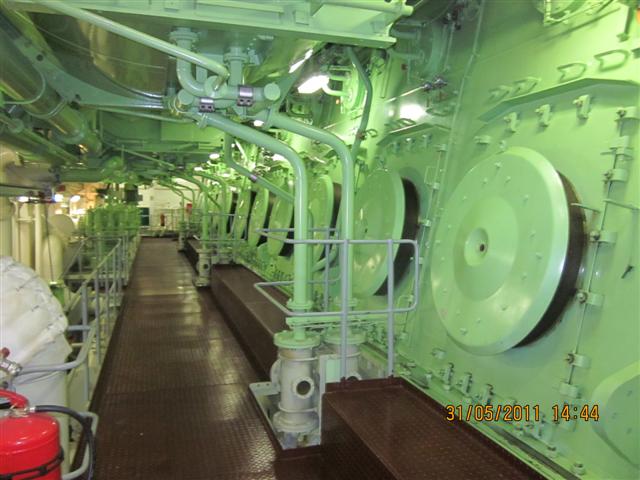Author: Md Taifur Rahman
Preparation:
- Toolbox meeting carried out.
- Carry out a proper risk assessment and work permit taken
- Enclosed is space entry permit to be taken and enclosed space entry procedure to be followed
- Inform bridge and put warning notice at ECR
- Block the starting mechanism and stop the L.O pump
- Open indicator cocks and engage turning gear
- Propeller clearance taken
- Turning gear must be operated only in remote mode
- All personnel involved should not have any object in their pocket
- Instrument/tools to be used should be checked and counted
Scope of inspection:
Starting from the top
- Check stuffing box arrangement
- Ensure locking wires and nuts are intact
- Check drain pipe is clear
- Check crosshead bearing for any sign of wiping
- Check cross guide shoes for any abnormal sign of scoring
- Check lube oil telescopic pipe for any sign of leakage due to loose connection
- Check bottom end bearing bolts and nuts for any slackness and sign of wiping
- Check crankcase floor and drain filters for any metallic debris present
- Check crank web and journal of the crankshaft (semi built type) for any sign of slippage compared to the reference mark provided
- Check main bearing bolts for slackness and sign of wiping
- Check tie-rods and HDB for slackness
- Check OMD sampling cup for blockage
- Check transverse girder for any cracks, if any doubt carry out die penetrant
- Check crankcase relief valve gauge for dents, wetness, and form of clogging
- Close all unit crankcase door and start lo pump
- One at a time open the crankcase door to inspect the oil flow pattern compared to the other unit. Flow pattern will differ when there is a reduction of LO flow or early sign of bearing failure
- Check crosshead lube oil piping linkage for leakages if possible
- For chain gear compartment check the oil spray nozzle for any change in oil flow and the condition of rubber guide and clearance.
- For thrust block check oil nozzle for clogging and flow pattern.
Source: SMA Classnotes.
